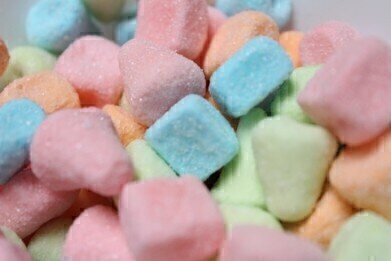LC-MS
How is Chromatography Exposing Taiwan’s Banned Food Dyes?
Nov 18 2016
What’s in your food? What exactly are you buying at the local supermarket? The information is becoming more and more readily available. Governments are pushing food companies to make the contents of their products clearer and safer as an increasing number of ingredients are being banned. But not every country has the same regulations and this can lead to problems — especially with so many foodstuffs being traded around the globe.
This makes the importation of food products a bit of an issue. And that’s exactly the type of problem that has happened recently in Taiwan. Taiwan’s Food and Drug Administration (FDA) have found banned food dyes in some of their imported snacks.
Testing food imports
In October 2016, the Taiwanese FDA tested a total of 36 food products to see if they were in line with local regulations. To examine the content, they used liquid chromatography-mass spectrometry (LC-MS), which is discussed in the article ‘Capillary Flow LC-MS Unites Sensitivity and Throughput’. Using a new advanced method, they found 46 food dyes in the products, both natural and artificial. The older equipment they previously used only managed to detect eight artificial food dyes.
Prohibited by law
Of course, not all 46 food dyes were illegal. But three of the food dyes the LC-MS system detected are illegal — the illegal ingredients are azorubine, amaranth and sulforhodamine. Sulforhodamine is a water soluble red dye that has known health risks, and is banned in most countries for human consumption. It is classified for industrial use. But what about the other two?
Azorubine, also known as carmoisine (E122) is legal in mainland China as well as the European Union. In 2008 there were calls for it to be banned by the EU after it was found to cause hyperactivity in children. But the colouring has also been linked to allergies, asthma and even cancer.
Amaranth, on the other hand, is banned in the United States, but legal elsewhere. The European Food Safety Authority found it to be safe in 2010, despite earlier tests finding that high doses of the ingredient could cause cancer in rats.
The results
Testing with LC-MS found that nine of the 36 products contained unlawful ingredients. Mainly cookies and soft sweets, luckily the products had been intercepted before entering the Taiwanese market. It’s thought they were originally produced in the Philippines or Thailand. But in accordance with the law governing food safety it is the responsibility of the companies importing foodstuffs to check the products for banned ingredients.
It’s now up to those companies to return or destroy any products they have already imported that contain these ingredients. The problem comes just two years after the 2014 Taiwanese food scandal, where huge amounts of food were found to be contaminated by gutter oil and industrial dyes.
Do you know what is in your food?
Digital Edition
Chromatography Today - Buyers' Guide 2022
October 2023
In This Edition Modern & Practical Applications - Accelerating ADC Development with Mass Spectrometry - Implementing High-Resolution Ion Mobility into Peptide Mapping Workflows Chromatogr...
View all digital editions
Events
Apr 23 2024 Kintex, South Korea
Apr 23 2024 Seoul, South Korea
Apr 28 2024 Montreal, Quebec, Canada
May 05 2024 Seville, Spain
May 15 2024 Birmingham, UK














